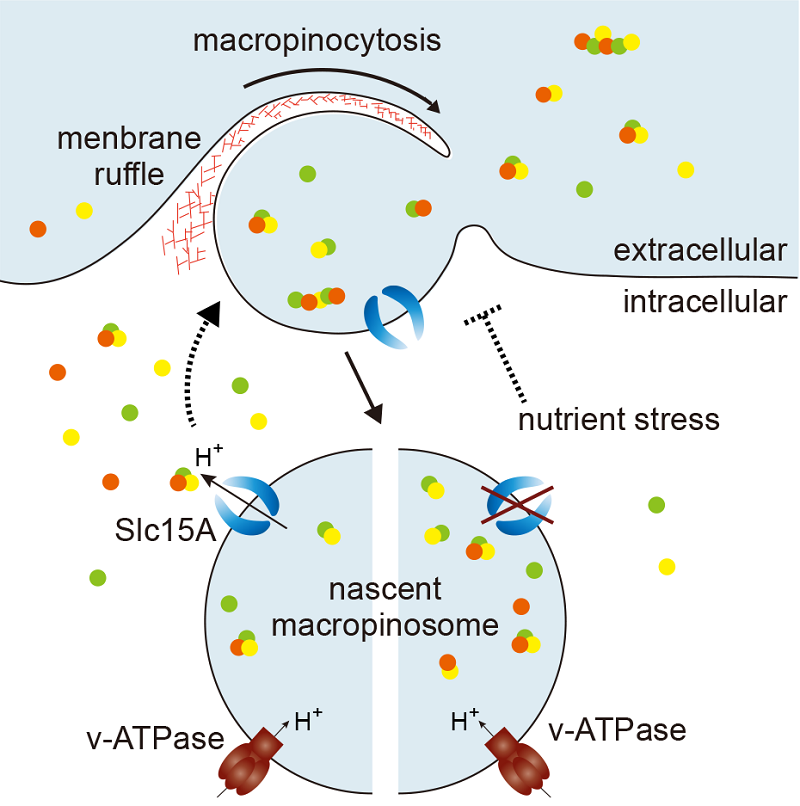Research reveals the interrelationship between macropinocytosis and cellular nutrient status
Macropinocytosis is an evolutionarily-conserved mechanism for the nonspecific bulk uptake and internalization of extracellular fluid. It is important in a range of physiological processes such as nutrient uptake, antigen presentation, and synaptic regulation. Recent studies have also revealed an important metabolic function of macropinocytosis. For example, various types of cancer cells exploit macropinocytosis to survive in nutrient-poor environments by ingesting extracellular macromolecules and breaking them down in the lysosome to fuel cell growth. However, how environmental and cellular nutrient status modulates macropinocytic activity is not well understood.
In a recent study published in the Journal of Cell Science, Professor CAI Huaqing's group at the Institute of Biophysics Chinese Academy of Sciences uncovered a feedback mechanism coupling cellular nutrient status and macropinocytosis. By developing a high-content imaging-based genetic screen in Dictyostelium, her group identified Slc15A, an oligopeptide transporter localized at the plasma membrane and early macropinosome, as a novel macropinocytosis regulator. They showed that deletion of slc15A, but not two other related slc15 genes, leads to reduced macropinocytosis, slower cell growth, and aberrantly increased autophagy in cells grown in nutrient-rich medium. Expression of Slc15A or supplying cells with free amino acids rescues these defects. In contrast, expression of transport-defective Slc15A or supplying cells with amino acids in their di-peptide forms fails to rescue these defects.
This study demonstrates that Slc15A modulates the level of macropinocytosis by maintaining the intracellular availability of key amino acids via oligopeptide extraction from the early macropinocytic pathway. It therefore constitutes part of a positive feedback mechanism coupling cellular nutrient status and macropinocytosis. Furthermore, this study reveals that early macropinosome is a previously unrecognized functional module, aside from an intermediate in the macropinocytic pathway. Future studies are needed to further elucidate how intracellular nutrient levels are sensed and transduced to regulate macropinocytosis.

Figure. Slc15A mediates oligopeptide transport from growth medium to the cytosol, thereby maintaining the intracellular availability of key amino acids and promoting macropinocytosis via a feedback regulation.
Full text link: https://journals.biologists.com/jcs/article/135/7/jcs259450/274929/Oligopeptide-transporter-Slc15A-modulates
Contact: CAI Huaqing
Institute of Biophysics, Chinese Academy of Sciences
Beijing 100101, China
Email: huaqingcai@ibp.ac.cn
(Reported by Dr. CAI Huaqing's group)

